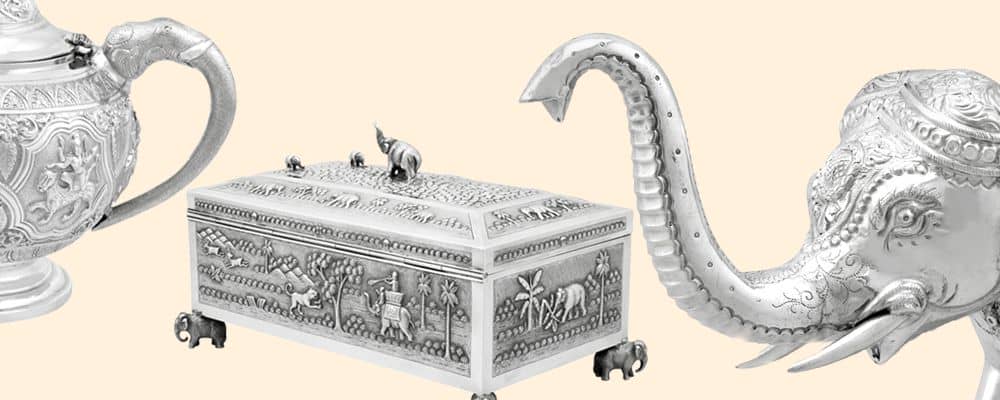Indian Silver
Vintage and Antique Indian Silver for Sale
Explore our fine collection of antique and vintage Indian silver for sale. Our collection includes Indian silver from varying periods and styles.
All silverware purchases at AC Silver include a complementary insurance valuation and free global shipping.
Andrew Campbell, using his 40 years’ experience within the antiques industry, handpicks all American silver for sale.

Indian Silver Frequently Asked Questions
There are some common traits with Indian silver, however this does not limit the creativity of a silversmith. Generically, Indian silverware is profusely and densely ornamented using human and animal scenes, or allowing for continuous floral designs. Whilst plain examples are created, Indian silverware shows the time the silversmith dedicated to each piece to allow the intensity of the ornamentation. The Indian silversmiths (otherwise known as sonars) would use ingots and recycled silver and remodel them, often drawing a design over the item and processing it repetitively until the required finish was achieved.
As with most countries there is a cultural divide with decoration, the most two popular being Kutch and Kashmir.
Kutch (Cutch) silver is the most popular Indian silver style, consisting of scrolling and interlacing foliate designs, often depicting animals and birds within the ornamentation. The decoration can further incorporate a frieze, with indigenous animals and hunting scenarios; this highlights the use of Kutch silver being both beautiful and humorous. This western Indian region is sometimes referred to as ‘Bhuj’, after the capital city.
Kashmir silver whilst still utilising foliate patterns varies from the Kutch style examples. The Kashmiri work is much less condensed and has a softer appearance. This region is located in the Himalaya Mountains, a place known for its natural beauty and highly attractive to travellers for centuries. The silversmiths of the area were influenced by the poppy plants and local foliage, in addition to the Islamic world – with arabesque line work being utilised.
The other regions drew from their own cultures to create unique Indian silver patterns. This would include, but was not limited to, textural landscapes from Alwar, building and structural designs from Calcutta, jungle designs from Lucknow and the iconic Swami style incorporating deities and Hindu religious scenes from Madras.
Indian silver did not require a hallmark for silver fineness or maker, however one of the best-known Indian silversmiths is Oomersi Mawji, who worked independently until being joined by his sons. His work is known for the high quality and use of classic Kutch region styles which was reflected in his hallmark as ‘OM BHUJI’.




















